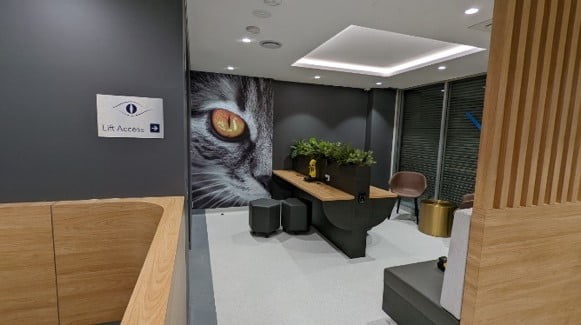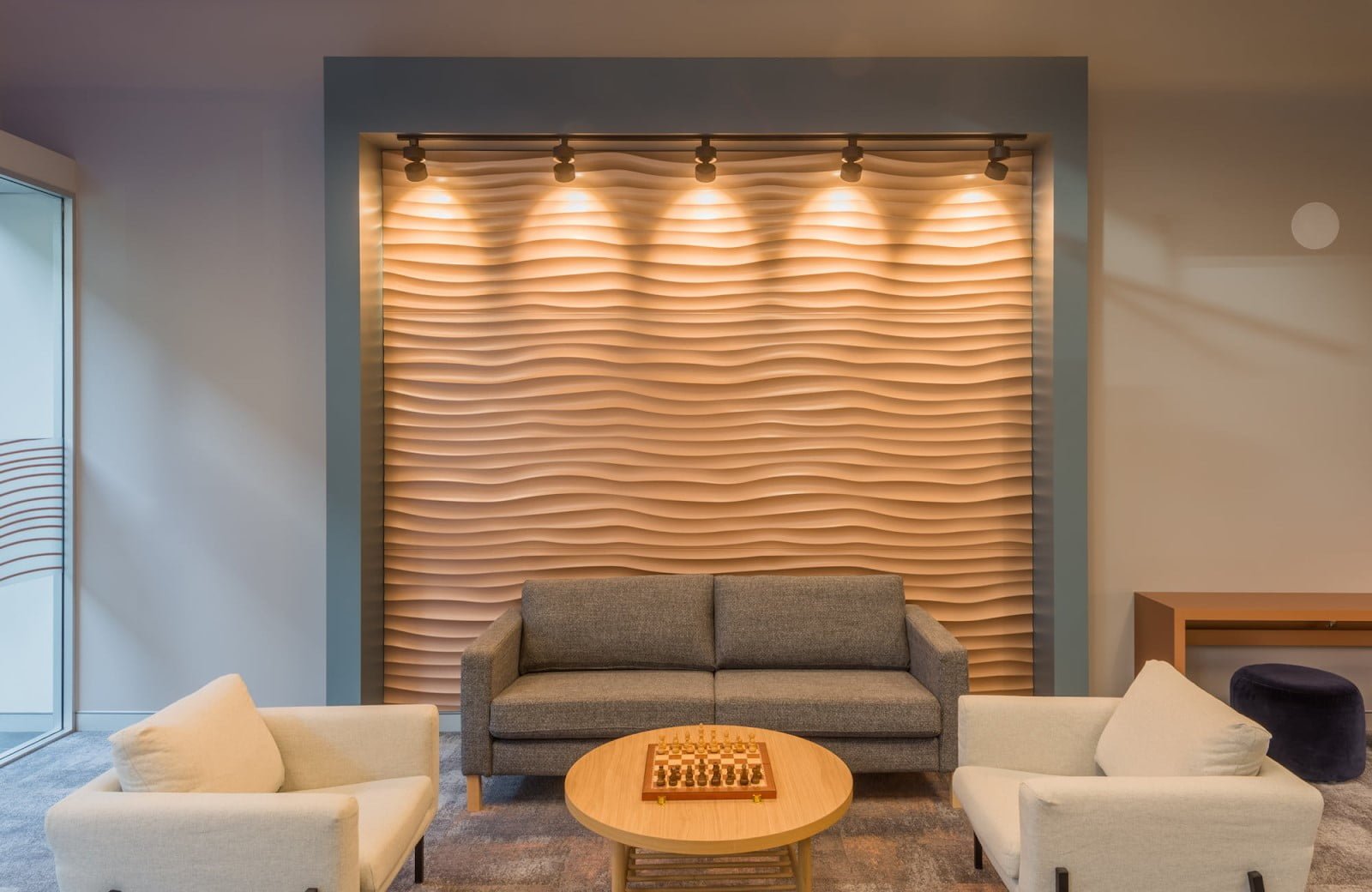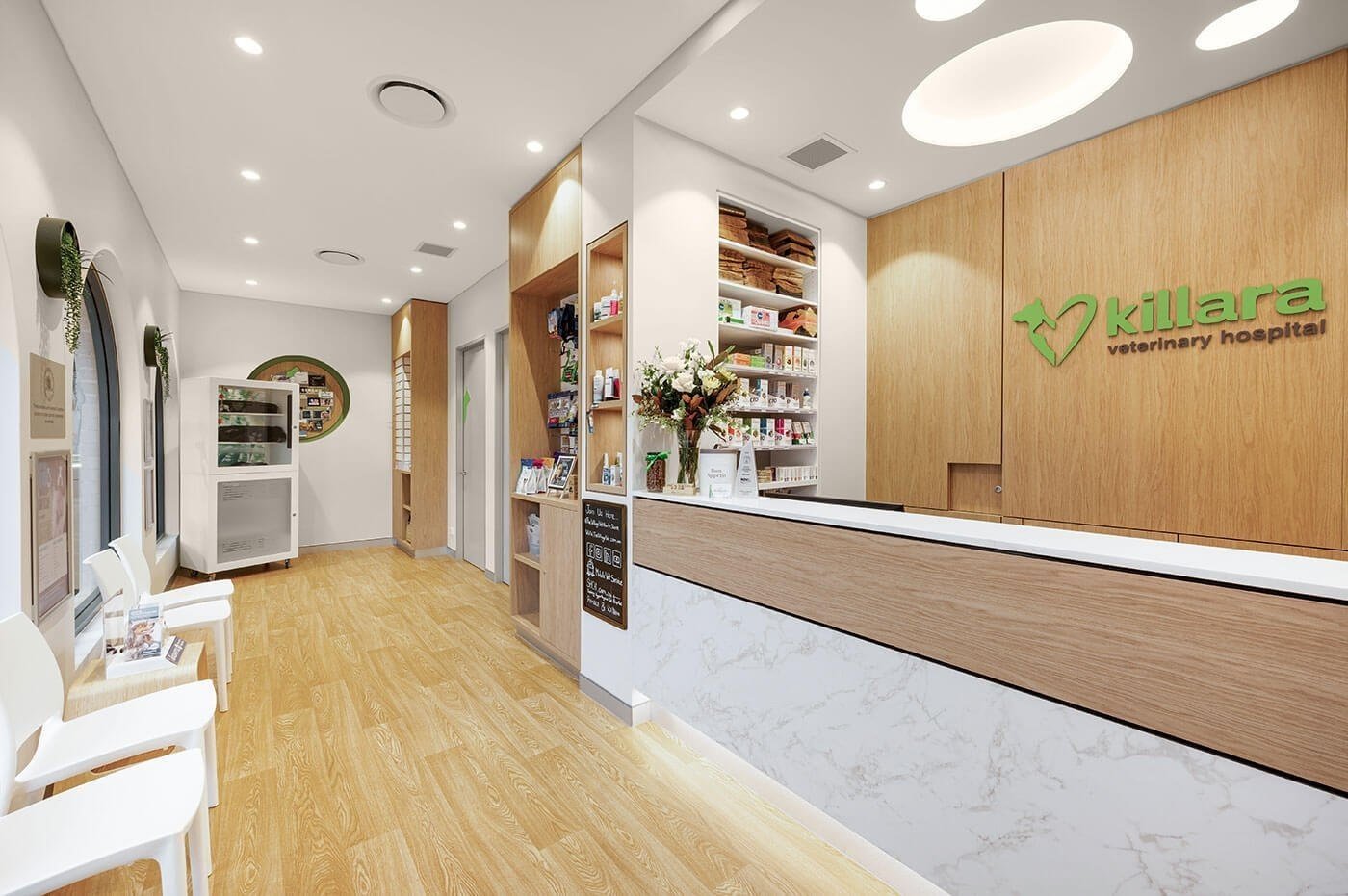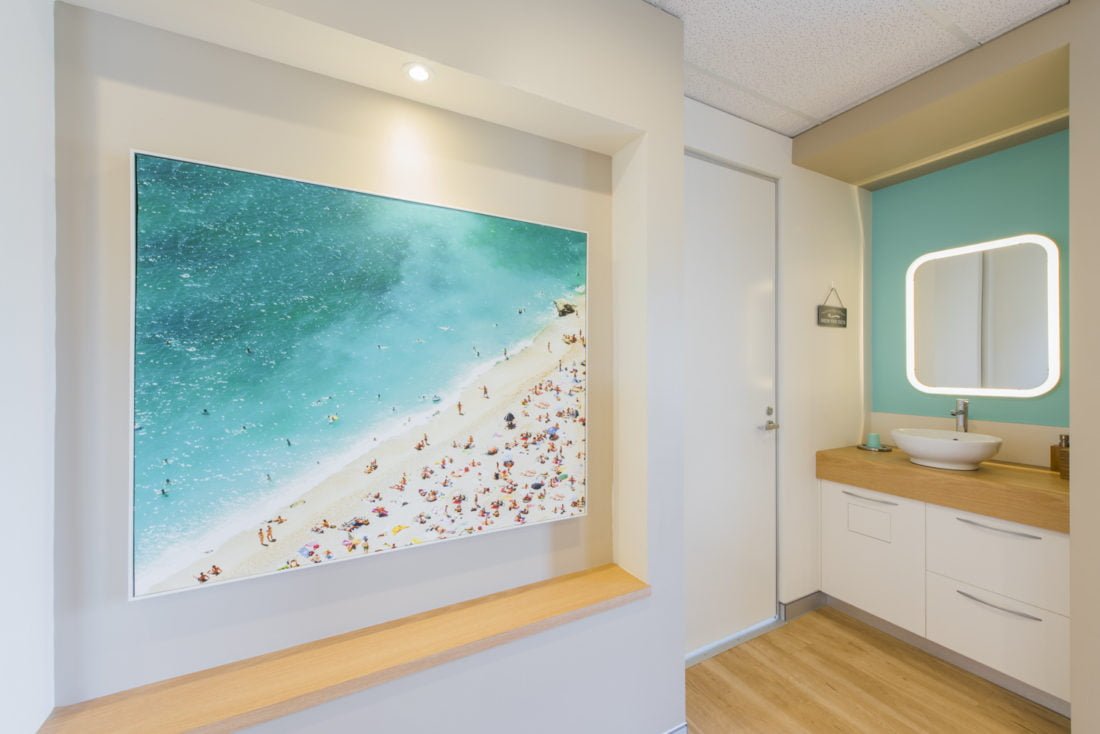A well-designed veterinary clinic plays a critical role in providing a positive experience for both pets and their owners. It serves as a sanctuary for healing, comfort, and care for animals in need, while also creating a welcoming environment for their owners during what can be an emotional time. The design of a veterinary clinic can greatly impact the overall experience for pets, owners, and veterinary staff, and should be carefully considered to ensure functionality, safety, and aesthetics are prioritised.
Top Trends in Veterinary Clinic Design
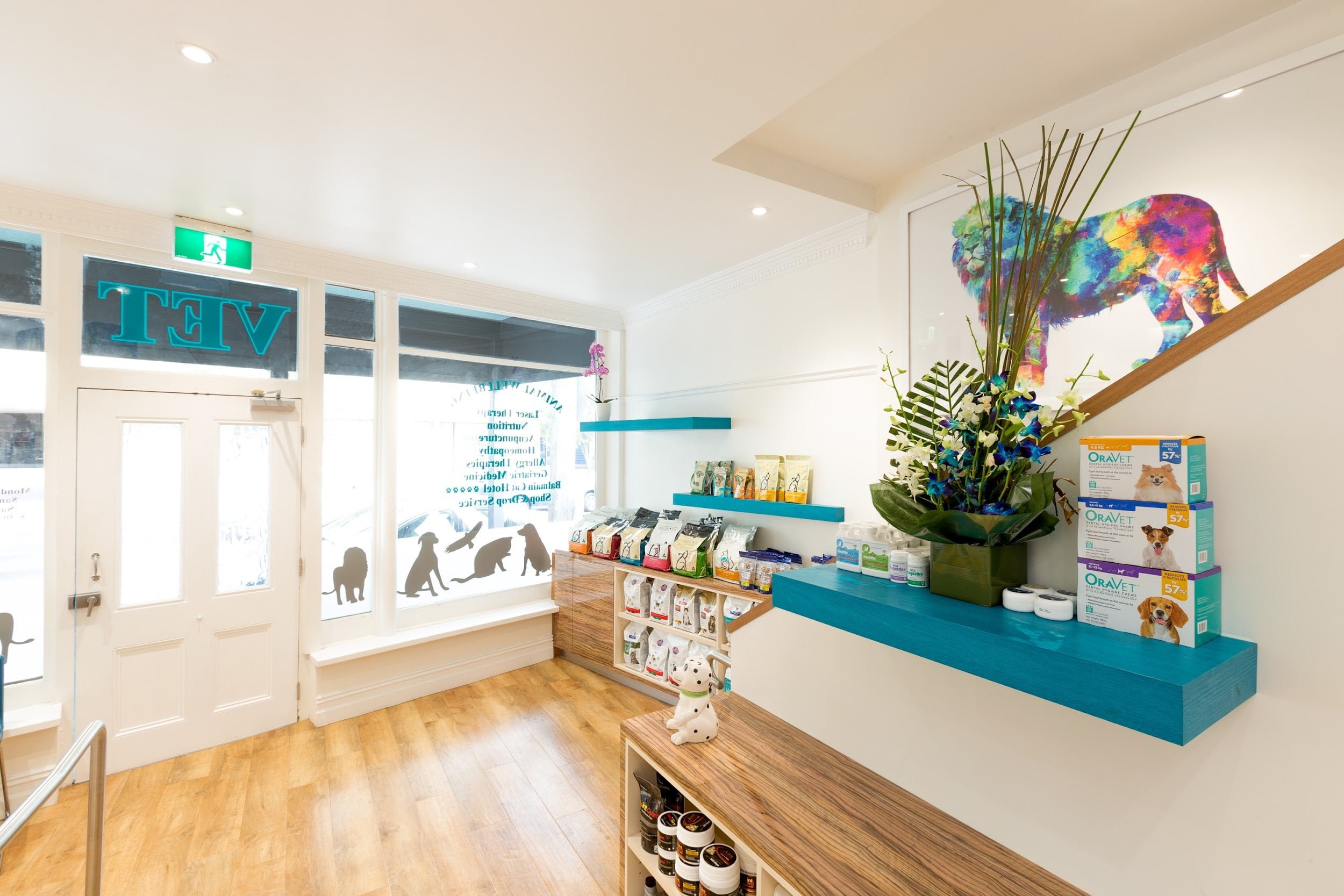
In recent years, there has been a growing focus on creating veterinary clinics that not only provide high quality medical care but also offer a comforting and calming environment for pets and their owners. Following are some of the latest top trends in veterinary clinic design:
Incorporating a Grieving Area and Separate Exit
An important trend in modern veterinary clinic design is the inclusion of a designated grieving area and a separate exit for deceased animals. Losing a beloved pet can be a deeply emotional experience for pet owners, and having a private space where they can mourn and say their final goodbyes can greatly aid the grieving process. Additionally, a separate exit for deceased animals helps maintain the privacy and dignity of the departed pets and their owners, creating a compassionate and respectful environment.
Use of Calming Colours and Textures
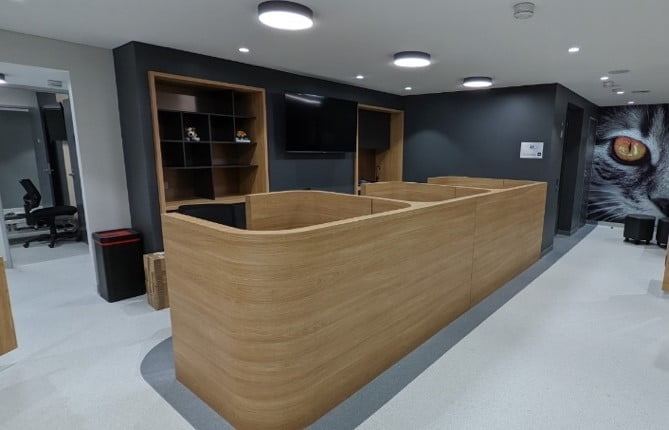
The use of calming colours and textures in veterinary clinics is another popular trend that aims to create a soothing and stress-free environment for pets and their owners. Soft and neutral colours, such as light blues, greens, and greys, are often used to create a sense of calmness and tranquillity. Read our recent blog post for insights on how to choose the right colour scheme for your space (link to colour psychology blog). Textures like natural wood, soft fabrics, and acoustic materials can also help to reduce noise and create a comfortable atmosphere, which can be particularly beneficial for anxious pets and their owners.
Technology Integration
Integration of technology is another key trend in modern veterinary clinic design. This can include features such as electronic medical records, digital imaging equipment, telemedicine capabilities, and online appointment scheduling. Technology integration not only enhances the efficiency and accuracy of veterinary care but also offers convenience for pet owners, allowing them to easily access and manage their pet’s health information. We talk more about this later on in this post.
Eco-Friendly Materials
Eco-friendly materials are gaining popularity in veterinary clinic design as a way to promote sustainability and environmental consciousness. The use of recycled materials, energy-efficient lighting, and low VOC (Volatile Organic Compounds) paints and finishes can contribute to a healthier indoor environment for pets, owners, and veterinary staff, while also reducing the clinic’s carbon footprint.
Tips for Designing a Modern Veterinary Clinic
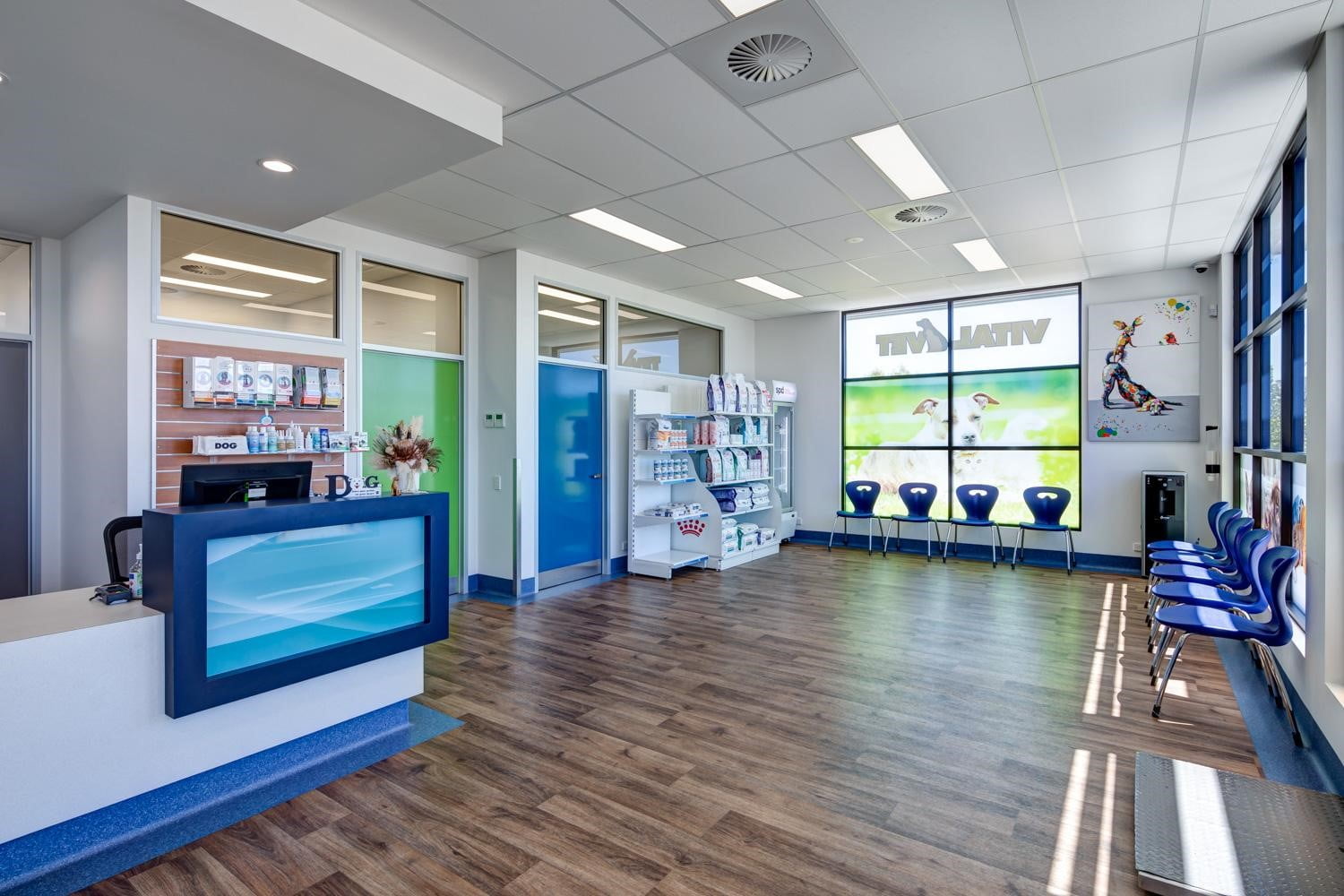
When it comes to designing a modern veterinary clinic, there are several key tips that can help ensure a functional, safe, and aesthetically pleasing environment for pets, owners, and veterinary staff alike. Here are some practical tips to consider:
Separate Waiting Areas for Cats and Dogs
Cats and dogs have different sensitivities to each other’s presence, and having separate waiting areas always help reduce stress and potential conflicts between them. . Designating distinct spaces with appropriate seating, ventilation, and visual barriers can create a more calming and comfortable experience for pets and their owners.
Incorporating Natural Light and Ventilation
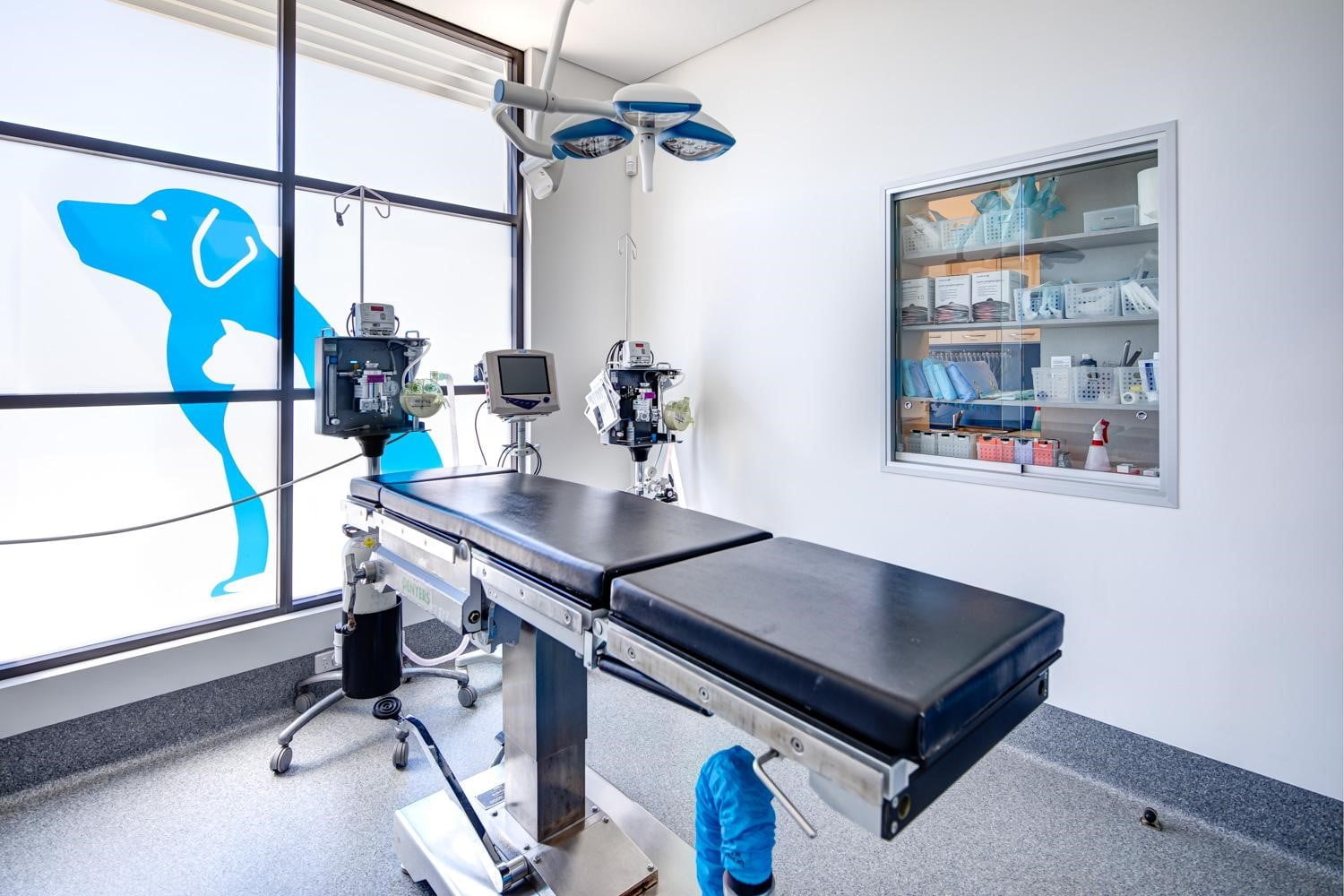
Natural light and ventilation are essential elements in veterinary clinic design. They not only create a pleasant and inviting atmosphere but also contribute to the wellbeing of pets and their owners. Incorporating large windows, skylights, and strategically placed vents can help bring in natural light and fresh air, which can improve the overall air quality and reduce the risk of airborne pathogens. Additionally, natural light has been shown to have a positive impact on mood and overall wellbeing, both for humans and animals.
Optimising Layout for Efficiency
Efficient layout design is crucial in a veterinary clinic to ensure smooth workflow and ease of movement for both pets and veterinary staff. Consider the flow of patients from the reception area to consult / examination rooms, treatment areas, and surgery rooms. Minimise travel distances and obstacles, and ensure that essential equipment and supplies are easily accessible. Efficient layout design can save time, reduce stress, and improve overall productivity in the clinic.
Choosing Durable and Easy-to-Clean Materials
Selecting durable and easy-to-clean materials is vital in a veterinary clinic to maintain a safe and hygienic environment. Pets can leave behind fur, dander, and other messes – spills and accidents are common occurrences in a veterinary clinic. Choose materials that are resistant to stains, scratches, and moisture, and are easy to clean and sanitise. Smooth and non-porous surfaces, such as stainless steel, laminate, coved vinyl and in some cases sealed concrete, are often used in veterinary clinics for their durability and ease of maintenance.
By considering our practical tips, your veterinary clinic design can ensure a safer, more hygienic, and efficient environment for pets, owners, and veterinary staff.
Incorporating Technology into your Veterinary Clinic Design
In today’s modern veterinary practices, technology plays a crucial role in enhancing the quality of care and streamlining operations. Incorporating various technological advancements into the clinic design can significantly benefit both pets and their owners. Here are some key areas where technology can be integrated into the clinic design:
Electronic Medical Records (EMR)
Transitioning from paper-based medical records to electronic records can greatly improve the efficiency and accuracy of patient data management. EMR systems allow for digital storage, retrieval, and updating of patient information, including medical history, test results, and treatment plans. This not only reduces the risk of errors and miscommunication but also enables seamless access to patient data across different areas of the clinic, enhancing coordination and collaboration among veterinary staff.
Telemedicine Capabilities
Telemedicine has become increasingly popular in veterinary medicine, allowing for remote consultation, diagnosis, and treatment of pets. Incorporating telemedicine capabilities into the clinic design, such as video conferencing equipment and telehealth platforms, can enable virtual consultations with clients and remote monitoring of patients. This can expand the clinic’s reach, improve access to care, and provide convenient options for clients, especially in situations where physical visits may not be feasible, such as during emergencies or for clients with anxious pets.
Digital Imaging Equipment
Digital imaging equipment, such as digital X-ray machines and ultrasound scanners, offer many advantages over traditional film-based imaging. Digital imaging allows for immediate image acquisition, higher image quality, and easy storage and retrieval of images. It also reduces the use of chemicals in developing films and minimises the environmental impact. Integrating digital imaging equipment into the clinic design can enhance diagnostic capabilities, shorten waiting times for patients, and improve the overall efficiency of imaging services.
Automated Systems and Smart Technology
Automation and smart technology can also be incorporated into the clinic design to streamline operations and improve efficiency. This can include automated appointment scheduling systems, digital check-in and check-out processes, and smart devices for monitoring and controlling clinic environments, such as temperature, humidity, and lighting. These technologies can save time, reduce manual tasks, and improve the overall experience for both pets and their owners.
Can we also add – Automated medication dispensing units, that is a safe way to keep track of the medication, doses, its secure and not everyone can access those sensitive drugs
It is important to carefully assess the clinic’s needs and budget to select the most appropriate technologies to integrate into the design, and to ensure proper training and ongoing support for staff to effectively utilise these technologies.
Creating a Pet Friendly Haven
Designing a modern veterinary clinic that meets the needs of pets, owners, and veterinary staff is crucial for providing optimal care and enhancing the overall experience. Key factors such as functionality, safety, aesthetics, and technology integration play a significant role in creating a pet-friendly haven. Incorporating trends such as a grieving area, calming colours and textures, eco-friendly materials, and efficient layouts can greatly enhance the clinic’s atmosphere and comfort for both pets and their owners.
By carefully considering the needs of all stakeholders, a well-designed veterinary clinic can create a positive experience for all. Good design promotes efficient workflow, provides a comforting environment for pets and their owners, while enhancing the overall quality of care. As veterinary medicine continues to advance, a modern clinic design that integrates functionality, safety, aesthetics, and technology will be essential in delivering exceptional veterinary care for our beloved pets.
At Perfect Practice, we pride ourselves on providing our clients with a seamless and stress-free experience from start to finish. We manage the entire process from initial design to construction and installation, so you can focus on providing the best possible care to your furry patients.
Don’t wait any longer, contact Perfect Practice today to discuss your veterinary clinic fitout needs!


